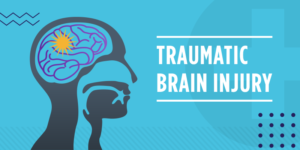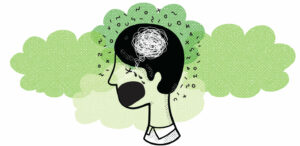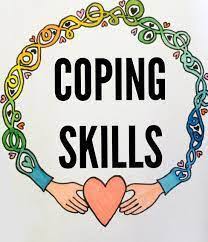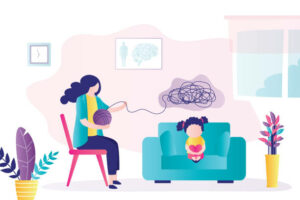Parents are often the first line of defense when it comes to helping their children deal with OCD. It is important to be able to recognize the signs and symptoms of OCD in your child, as well as the triggers that set off their obsessions and compulsions. In this blog post, we will discuss how to do just that. We will also provide some tips on how to help your child manage their OCD symptoms.
Defining OCD

Obsessive-compulsive disorder, popular by its acronym OCD, is a mental disorder that is characterized by recurring, unwanted thoughts (obsessions) and/or repetitive behaviors (compulsions). These obsessions and compulsions can interfere with a person’s daily life, job, schoolwork, and relationships. The obsessions and compulsions are often time-consuming and can cause a great deal of distress. This may manifest in multiple ways to understand and identify.
There are four main types of OCD, based on the predominant symptom:
•Checking compulsions (e.g., frequently checking the locks on doors)
•Contamination obsessions and compulsions (e.g., excessive hand-washing)
•Symmetry obsessions and compulsions (e.g., needing everything to be lined up perfectly)
•Hoarding (e.g., an excessive fear of throwing anything away)
It is possible to have more than one type of OCD at the same time.
What Are The OCD Triggers In A Child?
When we think of OCD, our very first thoughts are probably of adults with very specific and often eccentric behaviors, like needing everything to be symmetrical or in a certain order. It’s easy to forget that children can also suffer from OCD – and in fact, it is estimated that as many as one in 200 children does.
Like adults, the obsessions and compulsions of children with OCD can vary widely. However, there are some common themes and triggers that parents should be aware of. These are mostly related to the child’s environment, biology, or other factors. Some examples include:
Biological Factors
It is no secret that biology plays a role in the development of OCD. In fact, research has shown that there is a genetic component to the disorder. This means that if you or your partner suffer from OCD, your child is more likely to develop it as well.
Other biological factors that may contribute to the development of OCD include:
- Infections: There is some evidence to suggest that certain infections, such as strep throat, can trigger OCD in susceptible children. Some other examples may also include Lyme disease, the flu, and mononucleosis.
- Nutritional deficiencies: There is also some evidence to suggest that certain nutritional deficiencies, such as a lack of iron or vitamin D, can contribute to OCD. Other nutrients such as omega fatty acids, magnesium, and zinc have also been implicated.
- Hormonal changes: Fluctuations and changes in hormone levels, such as those that occur during puberty, can also be a trigger for OCD. This is likely due to the fact that hormones can affect brain chemistry. For example, the increase in estrogen during puberty has been linked to an increase in OCD symptoms. Some other hormones such as serotonin and dopamine, may also be responsible.
All these may be potential causes for the development of OCD, but it is important to remember that not everyone with these risk factors will develop the disorder. And conversely, not everyone with OCD will have these risk factors.
Traumatic Brain Injury (TBI)

TBI, or traumatic brain injury, can also be a trigger for OCD. This is because TBI can damage or change the way the brain works. Some studies have shown that people who have sustained a TBI are more likely to develop OCD. The brain is a very sensitive organ with a complex network of connections. So, even a small change can have a big impact.
For example, if the area of the brain responsible for processing fear and anxiety changes and becomes larger or more active than usual, it may be more likely that a person will develop OCD. Similarly, if the connections between this area of the brain and other parts of the brain become weaker than usual, it may also increase the risk.
Moreover, certain areas of the brain, such as the prefrontal cortex, have been shown to be particularly vulnerable to damage. The prefrontal cortex is responsible for executive functions such as planning, decision-making, and self-control. This means that if it is damaged, a person may have more difficulty controlling their impulses and thoughts. As a result, they may be more likely to develop OCD symptoms or tendencies. Likewise, the hippocampus, which is responsible for memory and emotion, is also susceptible to damage.
So, your child has sustained a TBI, it is important to be aware of the potential trigger it may have on OCD development.
Other disorders
Mental and psychiatric disorders are often comorbid, meaning they occur together. This means that if your child has one disorder, they may be more likely to develop another. For example, children with ADHD are more likely to also develop OCD. Some other examples include:
- Anxiety disorders: Anxiety disorders are often comorbid with OCD. This is because they share many common features, such as intrusive thoughts, avoidance, and hypervigilance.
- Depressive disorders: Depressive disorders and OCD can both be characterized by low mood, negative thinking, and a loss of interest in activities.
- Eating disorders: Eating disorders such as anorexia nervosa and bulimia nervosa are also comorbid with OCD. This is because they share many common features, such as obsessions with food and weight, compulsions, and avoidance.
- Attention deficit hyperactivity disorder (ADHD): ADHD is a common mental disorder that is often comorbid with OCD. This is because they share many common features, such as impulsivity, hyperactivity, and distractibility.
- Post-traumatic stress disorder (PTSD): Like ADHD, PTSD also shares many common features, such as intrusive thoughts, avoidance, and hypervigilance, which also exist in OCD.
As you can see, there are many potential comorbid triggers for OCD. It is important to segregate the symptoms and signs of each disorder.
Trauma

Trauma is described as a deeply distressing or disturbing experience. It can be something that happens to you or someone close to you. Children can face trauma due to instances such as violence, abuse, neglect, and assault, among other unfortunate instances.
Trauma can be a trigger for OCD because it can cause changes in the brain. For example, trauma can lead to changes in the way the amygdala (the part of the brain responsible for fear and anxiety) works. This can make a person more prone to developing OCD.
Additionally, trauma can also lead to changes in the brain anatomy, as discussed above. Moreover, our brain wiring also plays a role in how we process and store memories. So, if the brain is not functioning properly, it may be more difficult to process and store memories of the trauma, which can lead to intrusive thoughts and flashbacks.
Additionally, people who have experienced trauma often tend to develop certain defense mechanisms when they are in dreadful situations. For example, they may start to avoid certain places or people that remind them of the trauma. Or, they may start to develop compulsive behaviors, such as washing their hands excessively or checking things repeatedly. These defense mechanisms can often lead to the development of OCD symptoms.
Lastly, when we face trauma exposure, our cortisol levels (the stress hormone) increase. This can lead to changes in our brain chemistry and make us more susceptible to developing mental disorders, such as OCD.
Stressful life events
Because of the high-paced advancements in life, children face too many stressful situations too early for their age. For example, children may have to deal with academic pressure, peer pressure, and family conflict. All of these can be potential triggers for OCD.
- Academic pressure: For some kids, school is a major source of stress. They might be worried about doing well on tests, getting good grades, or being able to keep up with their classmates. It can be a trigger for OCD because it can lead to changes in the brain, such as the development of anxiety. When children are under academic pressure, they may start to avoid certain tasks or activities, such as homework or tests. Or, they may start to develop compulsive behaviors, such as studying for long hours or checking things repeatedly. These defense mechanisms can often lead to the development of OCD symptoms such as excessive studying or perfectionism.
- Peer pressure: Peer pressure is another common stressful life event that children face. It can be a trigger for OCD because kids want to fit in and be like their friends. They might worry that if they don’t do things the same way as their friends, they will be rejected or made fun of. This can trigger OCD behaviors such as people pleasing, constant checking, and a need for perfectionism.
- Family conflict: Family conflict is another stressful life event that can trigger OCD in children. This can include things like divorce, arguments between siblings, or even just a change in family dynamics. This type of stress can lead to OCD behaviors such as compulsively cleaning, the need for symmetry and organization, and constant reassurance seeking.
Media exposure

Lastly, media exposure is another potential trigger for OCD in children. This type of exposure can lead to intrusive thoughts and fears about the world around them. Some examples of this risk factor include:
- News reports of natural disasters or terrorist attacks: These can trigger fears about the world around them and lead to intrusive thoughts about safety.
- Seeing images of violence or blood: This can trigger fears about harm and lead to compulsions such as avoidance or checking behaviors.
- Increase in theft or robbery in news: As the world changes, so do the types of crimes that are committed.
- Playing violent video games: This can desensitize children to violence and lead to aggressive or violent behaviors.
If you notice your child is becoming more anxious or agitated after watching the news or reading the paper, it could be a sign that they are taking in too much information about the world around them and feeling overwhelmed.
Facing any one of these risk factors can be a trigger for OCD in children. However, it is important to remember that not all children who are exposed to these risk factors will develop OCD. It is believed that there is also a genetic predisposition for the disorder, which means that some children are more likely to develop OCD than others.
How To Manage Them?
Now that we are aware of some of the potential triggers for OCD in children, let’s talk about how to manage them.
Identify triggers
The first step is to identify the trigger. Once you have identified the trigger, you can start to look for ways to minimize the stressor or eliminate it from your child’s life altogether.
For example, if you know that your child’s OCD is triggered by academic pressure, you can talk to their teacher about ways to reduce the amount of homework they have or get them extra time for tests. If you know that your child’s OCD is triggered by peer pressure, you can talk to their friends and see if there is a way to help them feel more included. If you know that your child’s OCD is triggered by family conflict, you can seek counseling to help resolve some of the issues. The key to managing triggers for OCD in children lies in identification, understanding, and support. By being aware of potential triggers, we can take steps to minimize their impact or even eliminate them.
Build healthy coping mechanisms
The second step is to teach your child healthy coping mechanisms. This can include things like relaxation techniques, positive self-talk, and exposure therapy.

- Relaxation techniques: Relaxation techniques can help to reduce anxiety and calm the body down. Some examples of relaxation techniques include deep breathing, progressive muscle relaxation, and visualization.
- Positive self-talk: Positive self-talk is a way of countering negative thoughts with positive ones. For example, if your child is thinking “I’m not good enough,” you can counter that thought with “I am doing my best.”
- Exposure therapy: Exposure therapy is a type of treatment that helps people face their fears in a safe and controlled environment. This can help to reduce the fear response and eventually lead to habituation.
Additionally, you may also push your child to engage in activities that make them anxious. This can help them to understand that their anxiety does not control them and that they can face their fears head-on. You may also help them pursue their hobbies and interests, as this can help to boost their self-esteem and give them a sense of accomplishment.
Provide empathy and support
The third step is to provide support and understanding. This means being there for your child when they are struggling and letting them know that you understand what they are going through. It also means providing a safe and supportive environment for them to express their thoughts and feelings.
Having a mental illness as intense as OCD is difficult enough. However, children also have to deal with the added pressure of being misunderstood or ridiculed by their peers. As a parent, it is important to provide a listening ear and a shoulder to cry on. You should also be there to celebrate your child’s successes, no matter how small they may seem.
For example, if your child is able to make it through the day without engaging in their compulsions, you can praise them for their accomplishment. If they are able to take a step outside of their comfort zone, you can celebrate that as well. By providing understanding and support, you can help your child to feel better about themselves and their condition.
Get professional help

If you have tried all of the above and your child is still struggling, it may be time to seek professional help. There are many different types of treatment for OCD, and a trained mental health professional will be able to determine which type of treatment is best for your child. Some common types of treatment include:
- Cognitive-behavioral therapy: This type of therapy focuses on changing the way we think about our fears and learn healthy coping mechanisms.
- Exposure therapy: As mentioned before, exposure therapy helps people face their fears in a safe and controlled environment.
- Family therapy: Family therapy can help to resolve some of the underlying issues that may be causing OCD. It can also help to provide support and understanding for the family.
- Medication: Medication can be used to help reduce the symptoms of OCD. However, it is important to note that medication should not be used as a sole treatment for OCD. It should always be combined with therapy for more effectiveness.
Approaching a professional can help you tailor a suitable treatment plan for your child. As parents, do provide the right encouragement for sticking to the plan.
If you think your child might be struggling with OCD, the best thing you can do is to talk to a mental health professional. They will be able to assess your child and provide the necessary treatment. Remember, you are not alone in this. There are many resources available to help you and your family cope with OCD.
Conclusion
Conclusively, it is important to be able to recognize the OCD triggers in a child, as well as what sets off their obsessions and compulsions. In this blog post, we have discussed how to do just that. We have also provided some tips on how to help your child manage their OCD symptoms. If you think your child may be suffering from OCD, we encourage you to reach out for help.
If you are searching for a reliable, affordable, and effective source for seeking help for OCD or similar issues, reach out to Therapy Mantra. We are a team of highly trained mental health professionals offering online therapy services. Contact us today to learn more about how we can help you or your loved ones. Visit our website to book an online therapy session or you may also download our free OCD treatment app on Android or iOS for more information.


